Hunter, Trenna (1906-1996)
See OH81
Born in Brandon, Manitoba, Trenna taught in one-room schools in Alberta for thirteen years before graduating with an RN diploma from Vancouver General Hospital and receiving a certificate in public health nursing from the UBC School of Nursing in 1940. From September 1940 to March 1942 she was in charge of health services for the Japanese Canadians interned at Hastings Park.
She received a Bachelor of Science in nursing in 1944 and that year was appointed Director of Nursing for the Metropolitan Health Services where she worked until her retirement in 1966. She played a prominent part in the development of the industrial health consultant service in Vancouver. From 1948 to 1950 she chaired the National Committee on Public Health Nursing.
After serving in vice-presidential positions for nine years, she became president of the Canadian Nurses Association in 1956, leading the Canadian delegation to the International Congress of Nursing in Rome in 1957.
Contents of Biographical File
- Nomination for the CNA Memorial Book.
- Transcript of Oral History interview by Ethel Warbinek, March 26, 1993.
- Miscellaneous handwritten notes
- “Trenna Hunter: Remembering Yesterday,” RNABC News (1989), 21 (5), 17.
- “Trenna Hunter, President”, The Canadian Nurse (1956) 52 (40), 799-800.
- Executive Committee, Trenna G. Hunter, The Canadian Nurse (October 1950), p. 803.
- “Interesting People”, The Canadian Nurse (1944), 40, (11), 876.
- Two letters from Joan Bugge to Esther Paulson, dated September 16, 1996 & September 30, 1996.
- Letter to Trenna Hunter from the Japanese Canadian Committee, August 19, 1942.
- Biographical information.
- Six b&w photocopies of photographs of the Japanese Canadian’s Evacuation, Hastings Park, May 18, 1942, with covering information.
- “The Long Arm of the Nurse”, The Canadian Nurse (March 1954), 50 (3), 172-174.
- Trenna Grace Hunter 1906-1996. Biographical information.
- Obituaries
- Razzell. Mary, “Nurse Trenna Was Ray of Hope.”
- Miss Hunter’s remarks. Address given on the occasion of her retirement party.
- Trenna Grace Hunter, 1906-1996. Handwritten notes by Esther Paulson, undated.
- Two b&w photographs, one negative.
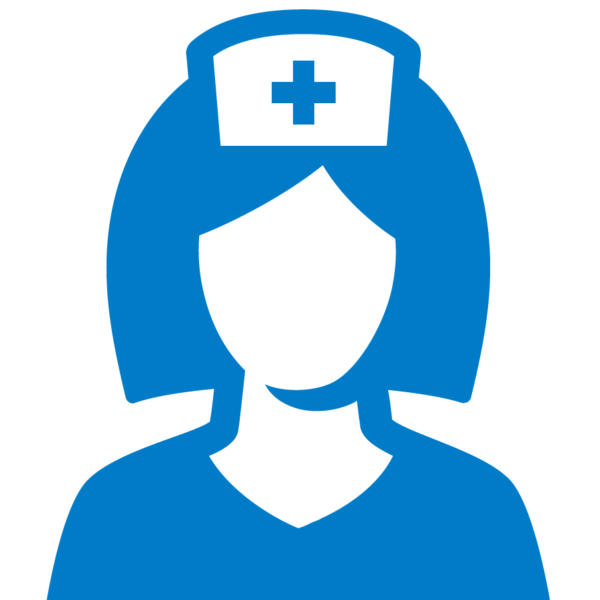 Hurd (nee Bolivar), Catherine Marguerite (1926 -2016)
Hurd (nee Bolivar), Catherine Marguerite (1926 -2016) Trenna Hunter (1906-1996)
Trenna Hunter (1906-1996) Nellie Hrisook (1925-2018)
Nellie Hrisook (1925-2018)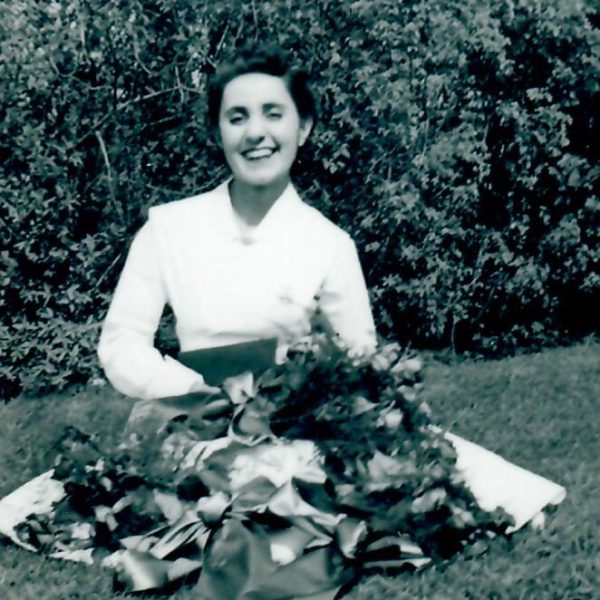 Louise Hemming (1919-2013)
Louise Hemming (1919-2013)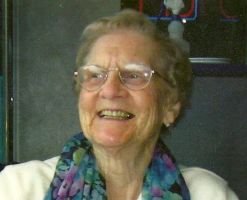 June Hylton (1920-2011)
June Hylton (1920-2011) Sylvia Holmes 1930-2003)
Sylvia Holmes 1930-2003) Thelma Hamilton ( -2002)
Thelma Hamilton ( -2002)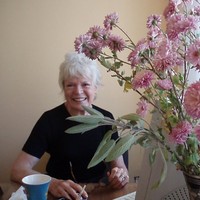 Ann-Shirley Goodell (1937-
Ann-Shirley Goodell (1937-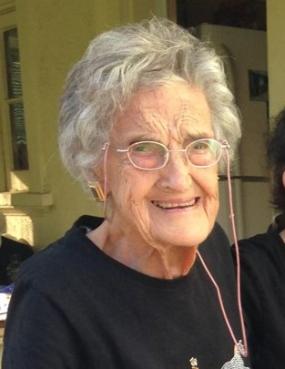 Lucille Giovando (1918-2015)
Lucille Giovando (1918-2015) Lorna Mary Horwood (1908-1996)
Lorna Mary Horwood (1908-1996) Anne Hopkins
Anne Hopkins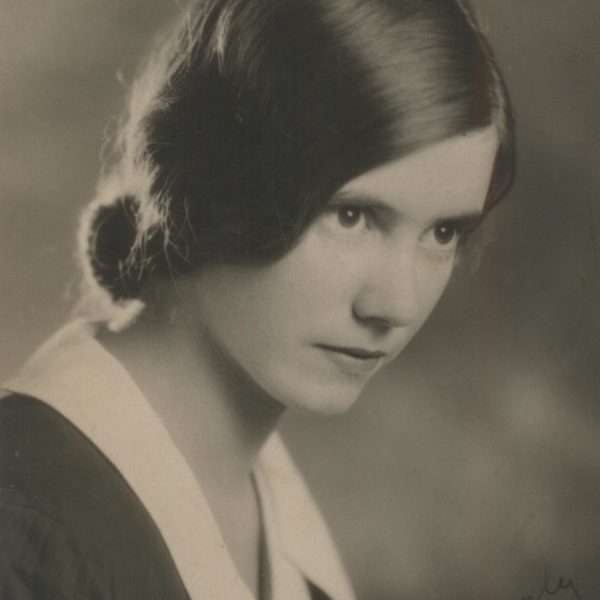 Evelyn Hood 1912 -1999
Evelyn Hood 1912 -1999 Laura Holland (1883-1956)
Laura Holland (1883-1956) Maud Hogan (1879-1935)
Maud Hogan (1879-1935)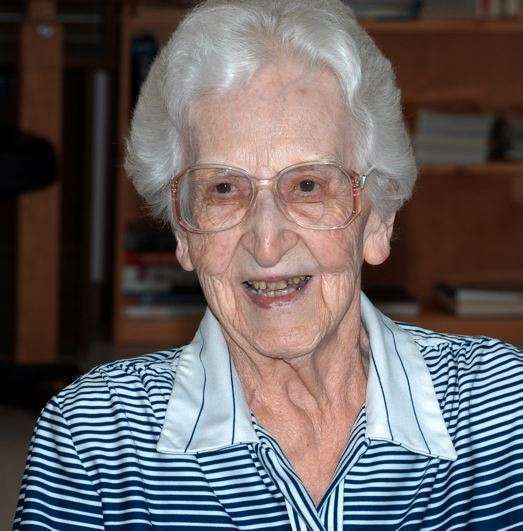 Kathleen Hodgson (1907- 2007)
Kathleen Hodgson (1907- 2007)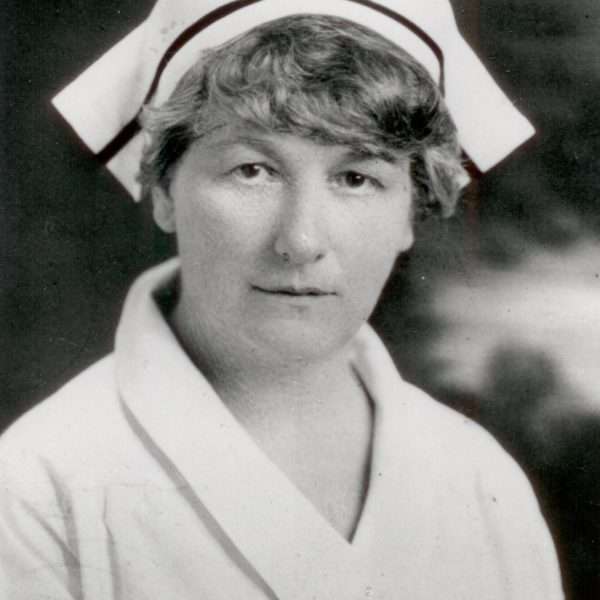 Isabelle Hill (1871-1936)
Isabelle Hill (1871-1936) Kathleen Higgins (1912-1998)
Kathleen Higgins (1912-1998)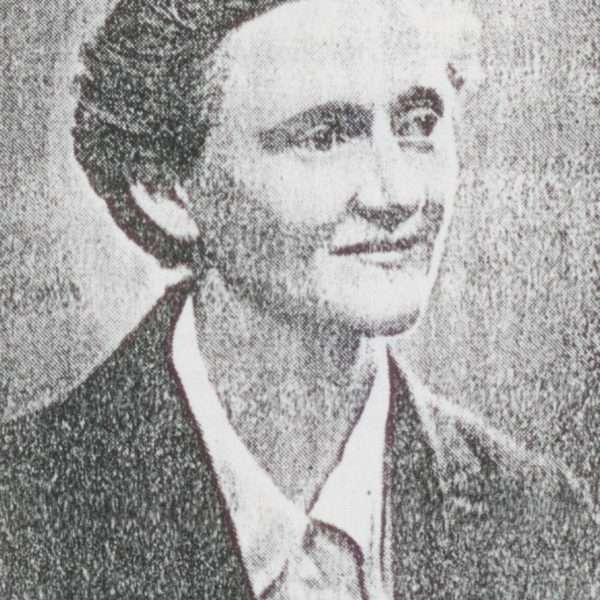 Mary E. Henderson
Mary E. Henderson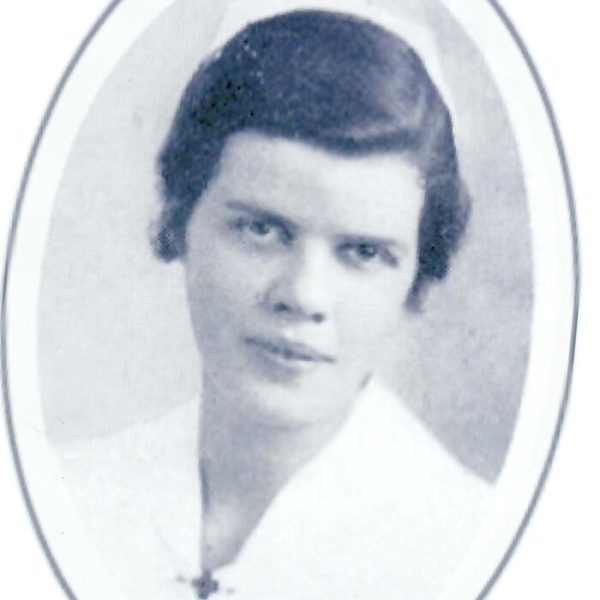 Fyvie Heal (1910-1986)
Fyvie Heal (1910-1986) Margery Hargrove (1918-
Margery Hargrove (1918- Margarette Handford (1918-
Margarette Handford (1918- Margaret Haggit (1912-
Margaret Haggit (1912-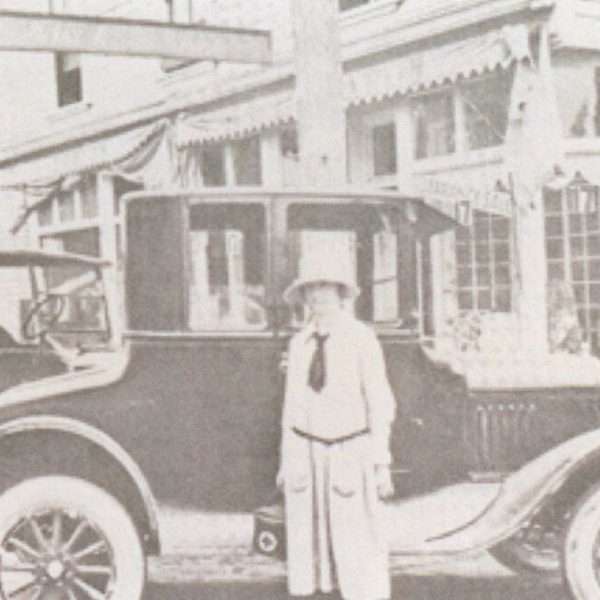 Esther Gardom (1900-1994)
Esther Gardom (1900-1994) Helen Gemeroy (1912-1997)
Helen Gemeroy (1912-1997)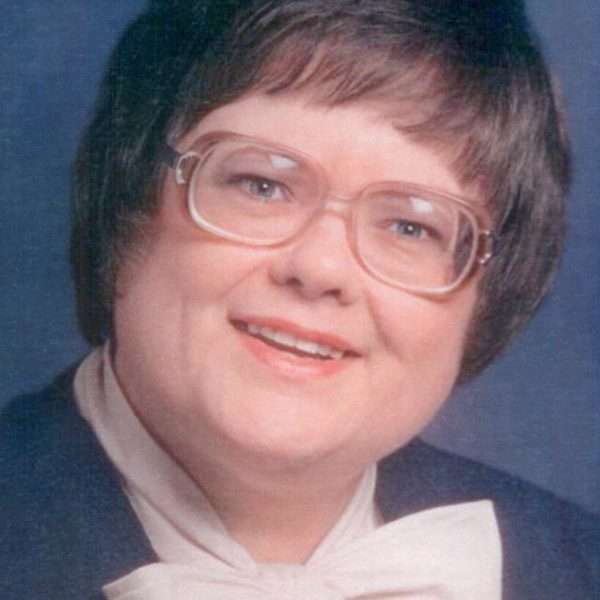 Janet Gormick (1940-2006)
Janet Gormick (1940-2006) Eleanor Graham (1914- 1978)
Eleanor Graham (1914- 1978)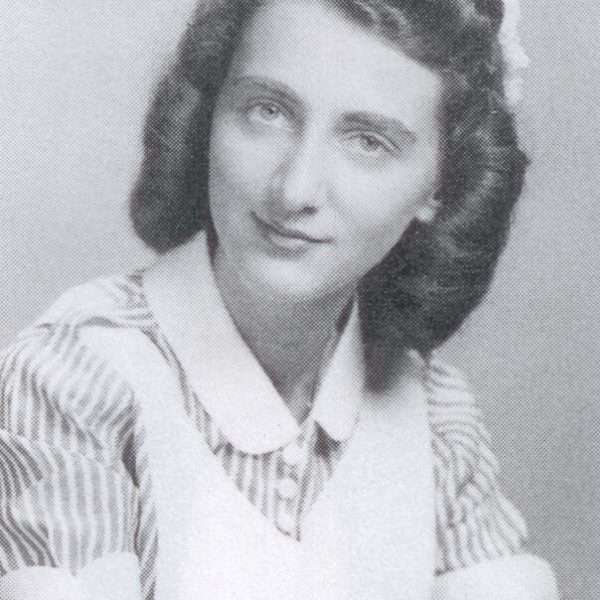 Stephany Grasset (1931- 2022 )
Stephany Grasset (1931- 2022 )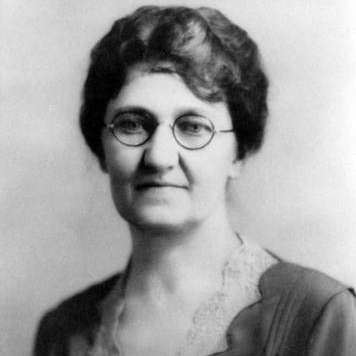 Mabel Gray (1880-1976)
Mabel Gray (1880-1976)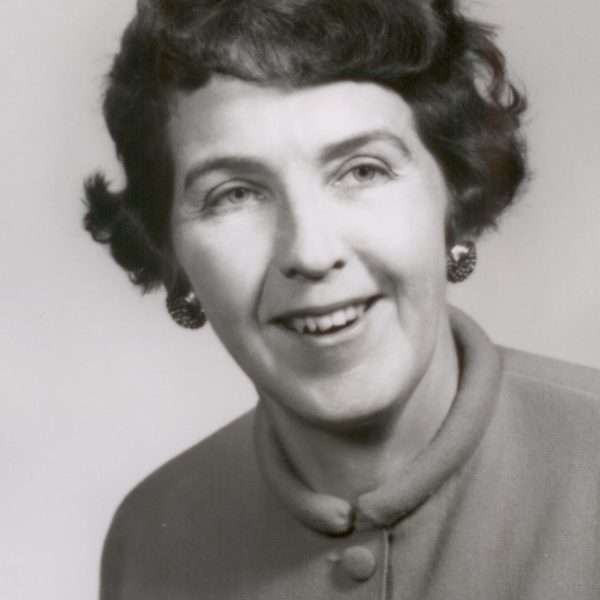 Monica Green (1917-2004)
Monica Green (1917-2004)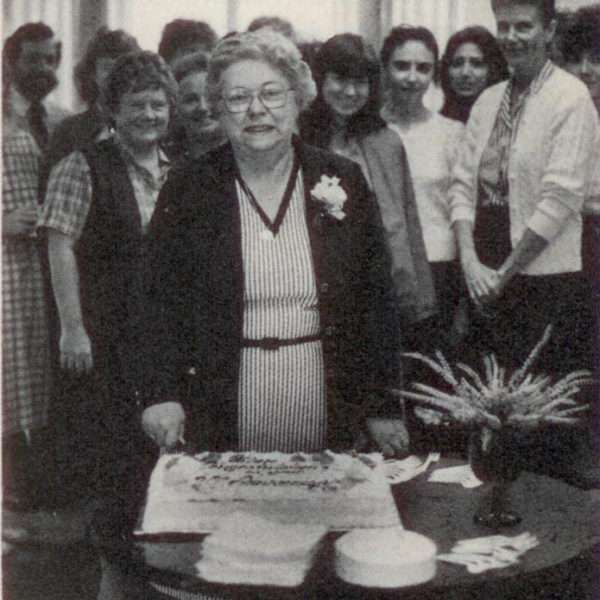 Helen Grice (1923-2007)
Helen Grice (1923-2007) Minnie Hackett (1998-1976)
Minnie Hackett (1998-1976)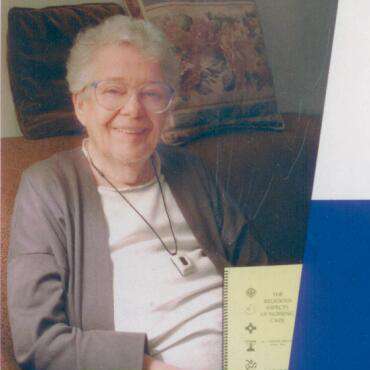 Jean Griffith (1922-2014)
Jean Griffith (1922-2014) Kaye Hagen (1936-
Kaye Hagen (1936-
 Giovando, Lucille (Lucy) (1918-2015)
Giovando, Lucille (Lucy) (1918-2015)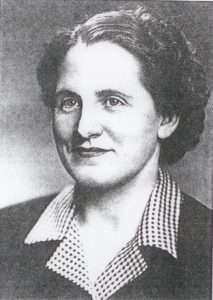 Lorna Horwood’s diverse life broke many of the constraints that held back most women, as she took on one challenge after another. She received her diploma in nursing from the Toronto General Hospital and continued her education with a year of post graduate studies at the Toronto Psychiatric Hospital, a BA from Queens in 1947, and an MA from Columbia University in 1954. She was a Superintendent of Nurses in psychiatric hospitals in London and Whitby. From 1948 to 1961 she was an assistant professor at UBC’s School of Nursing.
Lorna Horwood’s diverse life broke many of the constraints that held back most women, as she took on one challenge after another. She received her diploma in nursing from the Toronto General Hospital and continued her education with a year of post graduate studies at the Toronto Psychiatric Hospital, a BA from Queens in 1947, and an MA from Columbia University in 1954. She was a Superintendent of Nurses in psychiatric hospitals in London and Whitby. From 1948 to 1961 she was an assistant professor at UBC’s School of Nursing.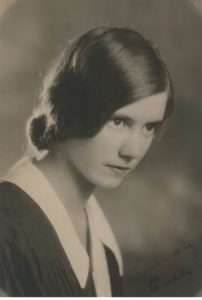 Born in Cadomin, an Alberta mining town, Hood graduated from the nursing program at the University of Alberta in 1936. She worked briefly in England, and then the US, receiving a diploma in public health nursing from the University of Washington. In 1946 she returned to Vancouver where she worked as a public health nurse until she joined the staff of the RNABC in 1951.
Born in Cadomin, an Alberta mining town, Hood graduated from the nursing program at the University of Alberta in 1936. She worked briefly in England, and then the US, receiving a diploma in public health nursing from the University of Washington. In 1946 she returned to Vancouver where she worked as a public health nurse until she joined the staff of the RNABC in 1951.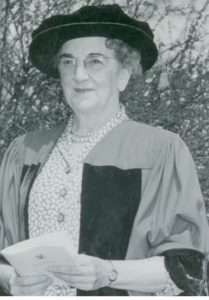 See also the Laura Holland fonds in UBC Archives
See also the Laura Holland fonds in UBC Archives Mary Hogan was born in London, Ontario, the eighth of nine children. She graduated from St. Michael’s Hospital Training School in Toronto, following which she did special nursing and some settlement work around Toronto. She accompanied a patient to Winnipeg, where she remained to work, and also met her future husband. After she married in 1910 and moved to New Westminster, she discontinued nursing.
Mary Hogan was born in London, Ontario, the eighth of nine children. She graduated from St. Michael’s Hospital Training School in Toronto, following which she did special nursing and some settlement work around Toronto. She accompanied a patient to Winnipeg, where she remained to work, and also met her future husband. After she married in 1910 and moved to New Westminster, she discontinued nursing.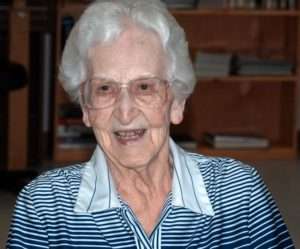 See Oral History files, Fonds 18, Series 3, Subseries 8
See Oral History files, Fonds 18, Series 3, Subseries 8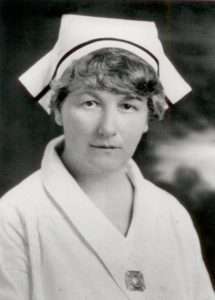 Isabelle Hill’s extensive contributions to medical care have been recognized by the building of the Isabelle Hill Memorial Fountain, dedicated to her at the Family Respite Centre and Home Care Society of BC in 2006.
Isabelle Hill’s extensive contributions to medical care have been recognized by the building of the Isabelle Hill Memorial Fountain, dedicated to her at the Family Respite Centre and Home Care Society of BC in 2006.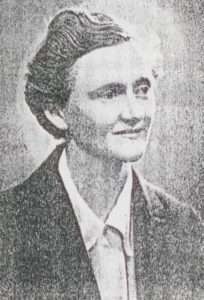 See Oral History files, Fonds 18, Series 3, Subseries 8
See Oral History files, Fonds 18, Series 3, Subseries 8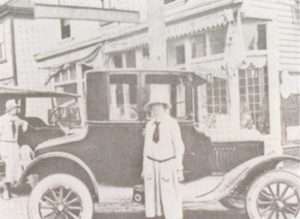 As a student nurse at VGH, Esther recalls separate buildings for each of several infectious diseases in which both nurses and patients were isolated. Tuberculosis occurred frequently among many she knew. Wards had thirty beds, with a separate ward for “Orientals”. She graduated in nursing from UBC in 1924, and went to work as a public health nurse in Saanich in the School Health program, also doing home nursing. When she married, she ceased nursing. Her nephew Garde Gardom became 26th Lieutenant Governor of British Columbia.
As a student nurse at VGH, Esther recalls separate buildings for each of several infectious diseases in which both nurses and patients were isolated. Tuberculosis occurred frequently among many she knew. Wards had thirty beds, with a separate ward for “Orientals”. She graduated in nursing from UBC in 1924, and went to work as a public health nurse in Saanich in the School Health program, also doing home nursing. When she married, she ceased nursing. Her nephew Garde Gardom became 26th Lieutenant Governor of British Columbia. Helen Gemeroy was a leader in developing and expanding the specialty of psychiatric nursing for registered nurses in Canada. After six years of teaching she took general and psychiatric nursing at Ponoka, Alberta. She went on to further education at the Toronto Psychiatric Hospital, McGill University and Sir George Williams, with a Masters’ of Arts from Columbia.
Helen Gemeroy was a leader in developing and expanding the specialty of psychiatric nursing for registered nurses in Canada. After six years of teaching she took general and psychiatric nursing at Ponoka, Alberta. She went on to further education at the Toronto Psychiatric Hospital, McGill University and Sir George Williams, with a Masters’ of Arts from Columbia.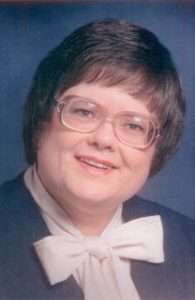 Janet was a long time member of the HoN group, serving on the Biographical and Archives Committees, and a strong advocate for a permanent archival home. Janet first studied and nursed in pediatrics at St. Joseph’s School of Nursing in Syracuse, NY. She opened the first psychiatric daycare unit in North America at this hospital, where she served as Head Nurse and Supervisor.
Janet was a long time member of the HoN group, serving on the Biographical and Archives Committees, and a strong advocate for a permanent archival home. Janet first studied and nursed in pediatrics at St. Joseph’s School of Nursing in Syracuse, NY. She opened the first psychiatric daycare unit in North America at this hospital, where she served as Head Nurse and Supervisor.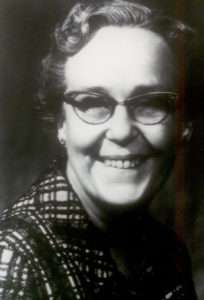 After her graduation from UBC and the Vancouver School of Nursing in 1936, Eleanor worked in various locations in BC, establishing the first public health service in Powell River. In 1945 she obtained a Masters’ of Science in Supervision and Administration from the University of Chicago.
After her graduation from UBC and the Vancouver School of Nursing in 1936, Eleanor worked in various locations in BC, establishing the first public health service in Powell River. In 1945 she obtained a Masters’ of Science in Supervision and Administration from the University of Chicago.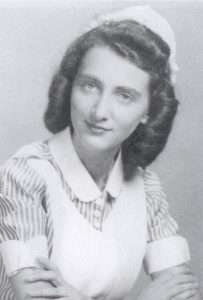 Born in Bulgaria, Stephany studied philosophy and history at the Sorbonne in 1949. She immigrated to the US, and from there to Canada in 1961. She graduated with a BSc from Louisiana State University in 1953, and from UBC in Public Health Nursing in 1968. Her many positions have included adolescent counselling, instructor in nursing, and district nurse for the VON. She has also been a nurse practitioner and Public Health nurse. She regards her internship in the Palliative Care Hospice at Victoria General Hospital in Montreal as a highlight in her career.
Born in Bulgaria, Stephany studied philosophy and history at the Sorbonne in 1949. She immigrated to the US, and from there to Canada in 1961. She graduated with a BSc from Louisiana State University in 1953, and from UBC in Public Health Nursing in 1968. Her many positions have included adolescent counselling, instructor in nursing, and district nurse for the VON. She has also been a nurse practitioner and Public Health nurse. She regards her internship in the Palliative Care Hospice at Victoria General Hospital in Montreal as a highlight in her career.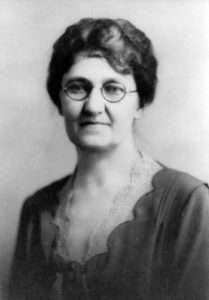 Mabel Gray was born near Brampton and taught school before entering nursing. She enrolled at the Training School for Nurses of the Winnipeg General Hospital in 1902, remaining on staff after graduation. In 1914 she became superintendent and principal of the School of Nursing at Winnipeg General Hospital.
Mabel Gray was born near Brampton and taught school before entering nursing. She enrolled at the Training School for Nurses of the Winnipeg General Hospital in 1902, remaining on staff after graduation. In 1914 she became superintendent and principal of the School of Nursing at Winnipeg General Hospital. See Oral History files, Fonds 18, Series 3, Subseries 8
See Oral History files, Fonds 18, Series 3, Subseries 8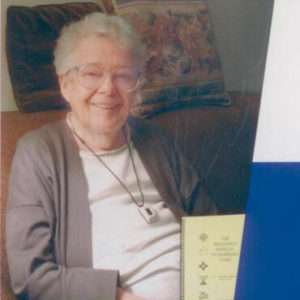 Jean Griffith was awarded the Agnew Gold Medal in Obstetrical Nursing when she graduated from the Vancouver General Hospital in 1944 and in 1945 received a BASc(N) from UBC. She married and worked as a Public Health Nurse in Saanich from 1945 to 1947. She moved back t6o Vancouver, raised a family, and assisted her forestry professor husband, who had lost his sight from complications related to Diabetes. He died in 1956 and she returned to nursing at VGH School of Nursing as the Student Health Clinic Nurses and later as an instructor teaching gynecology, public health, pediatrics and psychology until her retirement in 1982.
Jean Griffith was awarded the Agnew Gold Medal in Obstetrical Nursing when she graduated from the Vancouver General Hospital in 1944 and in 1945 received a BASc(N) from UBC. She married and worked as a Public Health Nurse in Saanich from 1945 to 1947. She moved back t6o Vancouver, raised a family, and assisted her forestry professor husband, who had lost his sight from complications related to Diabetes. He died in 1956 and she returned to nursing at VGH School of Nursing as the Student Health Clinic Nurses and later as an instructor teaching gynecology, public health, pediatrics and psychology until her retirement in 1982. Kaye’s desire for an education was hindered but not halted by her mother becoming terminally ill with cancer when Kaye was fourteen. She entered the Galt School of Nursing in 1955, and registered as an RN in June 1959. She recalls from her training in Ponoka Psychiatric Institution that gay men were institutionalized, as same sex preference was at this time considered a mental illness. She nursed at Wrinch Memorial Hospital in Hazelton and Mills Memorial Hospital in Terrace before taking time to raise a family.
Kaye’s desire for an education was hindered but not halted by her mother becoming terminally ill with cancer when Kaye was fourteen. She entered the Galt School of Nursing in 1955, and registered as an RN in June 1959. She recalls from her training in Ponoka Psychiatric Institution that gay men were institutionalized, as same sex preference was at this time considered a mental illness. She nursed at Wrinch Memorial Hospital in Hazelton and Mills Memorial Hospital in Terrace before taking time to raise a family.